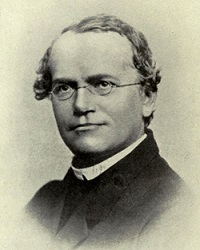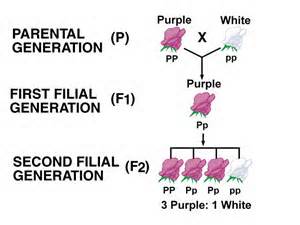|
TRANSLATE THIS ARTICLE
Integral World: Exploring Theories of Everything
An independent forum for a critical discussion of the integral philosophy of Ken Wilber
 David Christopher Lane, Ph.D.
Professor of Philosophy, Mt. San Antonio College Lecturer in Religious Studies, California State University, Long Beach Author of Exposing Cults: When the Skeptical Mind Confronts the Mystical (New York and London: Garland Publishers, 1994) and The Radhasoami Tradition: A Critical History of Guru Succession (New York and London: Garland Publishers, 1992). David Christopher Lane, Ph.D.
Professor of Philosophy, Mt. San Antonio College Lecturer in Religious Studies, California State University, Long Beach Author of Exposing Cults: When the Skeptical Mind Confronts the Mystical (New York and London: Garland Publishers, 1994) and The Radhasoami Tradition: A Critical History of Guru Succession (New York and London: Garland Publishers, 1992).If there's a singular topic Integral students need to be educated on it is evolutionary theory, given their frequent but uninformed use of the term "evolution". These short biographical chapters about evolutionary theorists have been written by different philosophy students of professor David Christopher Lane. (FV)
THE EVOLUTIONARY SCIENTISTS
Glimpses into the Life and Work of Great Thinkers in Evolutionary Biology
Coyne|
Crick|
Darwin|
Dawkins|
Diamond|
Dobzhansky|
Eldridge|
Gould|
Haldane|
Hamilton |
Lamarck|
Lovelock|
Mayr|
Mendel|
Monod|
Spencer|
Trivers |
Wallace |
Weismann |
Williams |
E.O. Wilson
Gregor MendelChristy LinGregor Mendel, also known as the “Father of Genetics”, is well known and recognized for his famous pea plant model that explains the inheritance of genetics. His mathematical formulas and laws, which we now term as Mendelism, demonstrate the specifics of how physical traits are passed down from parent to offspring and why certain traits are acquired, whereas others are not. Through his notable works and research, Mendel has been one of the greatest influencers that have shaped the universal understanding of how genetics are passed on through each generation.  Gregor Mendel, Gregor Mendel, also known as Gregor Johann Mendel, was born on July 22, 1822, in the Austrian Empire which we now recognize as the Czech Republic. Growing up in a rural setting, Mendel was raised in a relatively poor family that did not have enough money to fund his education. However, at a really young age, specifically 11 years old, Mendel showed great promise in his academics and after being sought after by a schoolmaster, he went into secondary school in Troppau, a grammar school, and enrolled in an honors program to further develop his education. After his graduation from school, Mendel attended a two-year program in the Philosophical Institute of the University of Olomouc to study philosophy. Soon after, he discovered that his talent was specific in mathematics and physics, so he dedicated his later years pursuing these fields of interest. Throughout his time at the University of Olomouc, Mendel did suffer from a period of depression that caused him to lose his passion for his studies but still ended up graduating in 1843. For a period of time, Mendel went against his father's wishes and studied to become a monk, thus changing his name to Gregor (originally born Johann). While he was a monk, Mendel dabbled in several different professions and even considered becoming a teacher, but unfortunately, he failed the certification exam. Mendel continued his education under many well-known and historically impactful scientists. In 1851, he studied with the famous Christian Doppler, the man who discovered the Doppler effect, to expand his knowledge in mathematics and physics. Afterward, he then progressed and moved into botany, or the study of plants, to further his understanding of the biological field. After being exposed to the many different fields of science, Mendel utilized his knowledge and basic understandings to discover one of the most fundamental principles in the specific biological field of genetics. While Gregor Mendel was a monk, he soon became interested in genetics after conducting experiments and research in his garden. The specific and particular plant he used to study genetics was the pea plant because they were not only easy and fast to grow, but they also had very clear physical appearances that are easy for observation. What Mendel was most interested in was discovering how the characteristics of the parent pea plant would contribute to the physical appearance of the offspring pea plant, and how this will ultimately determine the characteristics of the pea. During Mendel's time, the basic understanding of heredity was the Blending Theory of Inheritance, which stated that “offspring were merely an average between the two characteristics of their parents” (Blamire). However, what Mendel noticed in his monastery's garden, was that not all of the pea plants that he was growing possessed a mixture of the parent plants' characteristics. By utilizing the scientific method Mendel immediately started experimenting to debunk the Blending Theory of Inheritance and prove that there is an underlying cause of why some characteristics are visible while others are not. Mendel was able to control his experiment through a method known as cross-pollination, where he retracted the pollen from the male pea plant's anther, the male reproductive organ, and placed it within the female pea plant's pistil, or the area that contains the female's gametes. The issue was that pea plants naturally self-pollinate since each plant possesses both reproductive organs, so Mendel removed some of the pea plant's anthers to prevent self-pollination from occurring. Soon, Mendel was able to create several hybrids from two different parent plants and observe how characteristics are passed on.  Mendel took into account seven main characteristics, some of which were the flower colors or whether the peas were round or wrinkled. He started off by separating the flowers into generations: the P generation, or the parent generation, then the F1 generation, which were the offspring, then to follow, the F2 generation. Shockingly, what he noticed was that the P generation that contained both white and purple flowers produced no white flowers within the F1 generation, but interestingly enough, the white flowers appear again in the F2 generation making up around 25% of the total flowers. After doing the same exact test but observing the other characteristics, Mendel saw the same exact pattern as the flower color occurring in these other aspects. After experimenting with over 30,000 pea plants, Mendel formulated several notable and famous laws with the first and most famous being the Law of Segregation which states that “allele pairs separate or segregate during gamete formation, and randomly unite at fertilization” and that the parents can only pass down one allele to their offspring (Bailey). Essentially, what this law explains is that each organism inherits two alleles for each trait and if they are different, one is dominant and the other is recessive. The idea that when the purple flower and the white flower produce an offspring, the color isn't “mixed” and only one color is seen, debunks the Blending theory, and thus proves that one trait is dominant over the other. This leads to another one of Mendel's laws, known as the Law of Dominance which states that the visible allele is referred to as the dominant allele whereas the one that is masked, or the one we can't see, is known as recessive. After the Law of Segregation, Mendel formulated another law, known as the Law of Independent Assortment, and together, these two are known as Mendel's Laws of Heredity. The specifics of the Law of Independent Assortment explains how when the gametes are formed, the alleles traits separate and during fertilization, these pairs are then randomly combined. This means that the genes have absolutely no control or influence over the way that the alleles are sorted or combined. The independent assortment process is best illustrated through a model known as a dihybrid cross which shows how the different traits of two parents can create several possible combinations, (in a dihybrid cross specifically four), and how certain traits are more likely to occur compared to others. One of the most interesting relationships that should have, but never occurred was that between Charles Darwin and Gregor Mendel. Both are extremely talented and educated evolutionists; however, the failure to acknowledge or notice one another's research and theories led to incomplete ideas in both of their fields. For Darwin, one of his largest concerns was the Blending Theory of Inheritance which he observed as an incomplete and unsupported theory. However, without the proper approach, Darwin was unable to decipher the science behind heredity which could have been answered if he looked into Mendel's work. Mendel, on the other hand, had the opportunity to look at Darwin's work but scholars who analyzed many of Mendel's notable theories argue that Mendel not only does “not understand Darwin but [would] actually oppose to some of Darwin's ideas” (Blamire). After Gregor Mendel died in January 6, 1884, his works were not discovered until years after his death. Yet when his research and laws of heredity were studied by several scientists, botanists and biologists heavily referenced many of his works to fuel or support many of their own individual studies. Other notable scientists in the very early 20th century even replicated Mendel's experiment to further verify the validity of his work. Mendel has had a major impact on our overall scientific understanding of genetics today. Further Reading1. Experiments in Plant Hybridisation, 1866. 2. Mendel's Principles of Heredity, Dover Publications; 2010 edition (June 17, 2010). 3. Robin Marantz Henig, The Monk in the Garden: The Lost and Found Genius of Gregor Mendel, the Father of Genetics, Mariner Books (May 12, 2001). MSAC Philosophy Group
The theory of evolution has a long history. However, it was not until Charles Darwin and Alfred Russel Wallace discovered that the wide variety of species we presently see were largely the result of natural selection did evolutionary studies have a solid, scientific basis. In the past one hundred and sixty years, a number of eminent biologists have contributed to our understanding of how complex life forms emerged from simpler, more rudimentary ones.
Comment Form is loading comments...
|